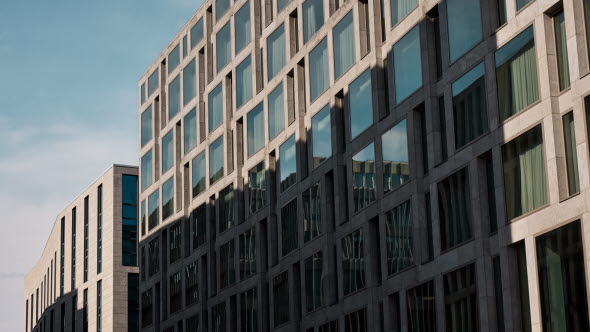Real estate sector


The property company Vasakronan has a strong focus on transitioning its operations to become more sustainable from an economic, environmental, and social perspective. This strategy has resulted in both higher revenues and lower costs for the company.
Vasakronan is one of Sweden's largest commercial property companies. Most of its properties are office buildings, but the company also owns retail properties in the four largest city centers in Sweden.
"We don’t have a dedicated sustainability department in the company. Instead, we have long been working to integrate sustainability efforts into the regular business operations," says Anna Denell, who is responsible for driving this integration at Vasakronan.
She mentions that the four national pension funds (AP-funds), which jointly own Vasakronan, impose strict requirements on the company to be at the forefront of sustainability without compromising returns for today's and tomorrow's pensioners.

"We conducted an analysis of our operations to understand where we have the greatest environmental impact and how we can contribute to improving people's everyday lives. This analysis forms the basis of our work," says Anna Denell.
Regarding the environment, she highlights the need to reduce the amount of energy required to operate a property and the businesses within it. It’s also important to choose the right materials when constructing new buildings or renovating existing ones, and to responsibly manage materials from demolitions and renovations.
Vasakronan has set tough and concrete goals for its operations across several areas. As early as 2008, the first goal was to halve energy consumption and aim to be 50 per cent below the industry average. Some measures to reach this goal are simple to understand and implement, such as not running the heating system while the air conditioning is cooling the air, avoiding heating empty spaces, or recovering heat from the ventilation system.
More advanced actions, such as adding extra insulation or upgrading windows with an additional pane for insulation, are also part of the strategy.
When building new properties or conducting major renovations, the focus is on selecting materials with minimal environmental impact, as well as on reusing or recycling materials. Anna Denell mentions a project in Uppsala, Lumi, where Vasakronan opted for a major renovation instead of demolishing and rebuilding. In addition to preserving the old concrete framework, a large amount of reused material was incorporated, including materials from demolished facades, interior walls, and glass panels.
"Overall, this significantly reduces the climate impact of the renovation and is an important step in our work to achieve climate neutrality across the entire value chain by 2030," says Anna Denell.
Since 2008, Vasakronan has managed to reduce energy consumption in its existing property portfolio by 67 per cent by the end of 2023. Additionally, they have phased out all use of energy from fossil fuels. As a result, their direct carbon emissions have decreased by 90 per cent between 2006 and 2023.
Efforts to lower carbon emissions by reducing energy consumption and using building materials with lower emissions, such as recycled concrete or high-performance insulation materials, can sometimes involve higher costs, but they also often lead to savings and higher revenues.
"When we reduce the energy needs of our buildings, heating costs decrease. We also see a clear trend where more and more companies want to operate with a strong environmental profile, which benefits our occupancy rate," says Anna Denell.
This means that Vasakronan generates higher revenues than property companies that haven’t focused as much on sustainability.
Higher rents and increased demand from customers reduce the investment risk, which in turn increases the value of the properties. Banks and those who lend money to properties through bonds appreciate the lower risk and higher valuations, which can enable lending at a lower cost.
"We mainly finance ourselves through bonds. In 2013, when we became the first company in the world to issue a so-called green corporate bond, significantly more investors were interested than before. This gave us both a broader investor base and eventually lower financing costs," says Anna Denell.
Green bonds, like other forms of green financing, are subject to extensive regulations and reporting requirements on how the funds are used. Initially, this can lead to higher costs for establishing a green framework, processes, and new work methods. However, we are now at a stage where companies increasingly need to provide the same information for their regular sustainability reporting, so the additional costs aren’t that significant.
Banks and other financial advisors contribute by helping companies like Vasakronan establish the necessary green framework and communicate with investors in the financial markets.
Since 2013, SEB has helped Vasakronan establish two frameworks for green financing and has acted as an advisor for the company’s ongoing issuance of green bonds.
"It usually involves close collaboration between us as financial advisors and our customers. Together, we ensure that we inform about developments both in the industry and more generally to meet the needs of players in the financial markets," says Fredrik von Platen, who works with sustainable financing in the capital market financing department at SEB.
He says the development is progressing rapidly, and SEB expects that what is now called green financing will become more common in the coming years, with more investors wanting to know how their money is being managed. At the same time, what we now call traditional or normal financing will become both rarer and potentially more expensive if sustainability risks aren’t identified or addressed.

By offering advisory services, innovative and sustainable financing and investment products, we're helping our clients to reach their sustainability targets.

We’re dedicated to supporting your transition to a low-carbon economy and identify sustainable opportunities within the real estate sector.